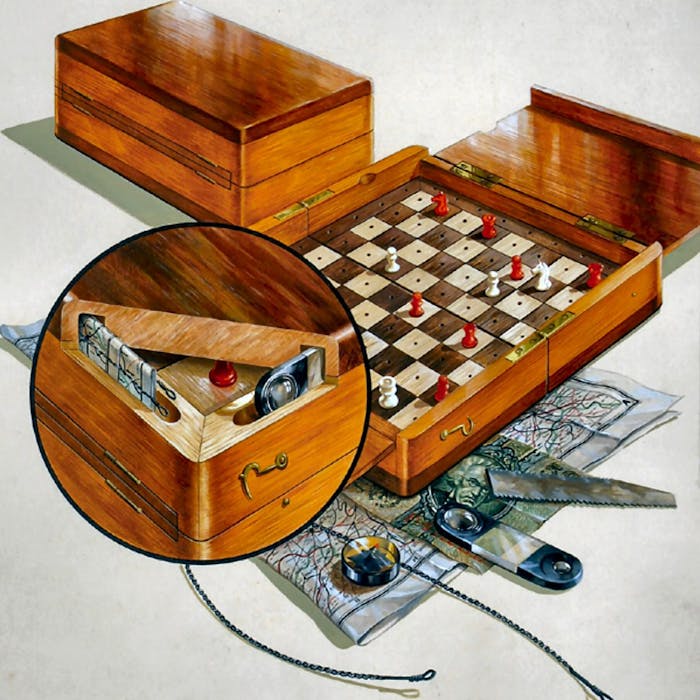
MI9 - assisting the great escapes of World War Two
We hear in Bond films and other stories about secret service organisation MI6, tasked with controlling British espionage abroad, and domestic espionage specialist MI5. But there were once other MI (Military Intelligence) secret service operators ...
From the First World War to the end of the Second World War, there were, in fact, nineteen organisations in the MI sequence - MI1 to MI20 (MI18, rather mysteriously, did not exist). After the Second World War, those remaining were disbanded with the exception of MI5 and MI6.
One of the best known of the other MI departments was M19.
The British Directorate of Military Intelligence Section 9, was a highly secret department of theWar Office between 1939 and 1945. During World War II it had two principal tasks: assisting in the escape of allied prisoners of war (POWs) held by the Axis countries, especially Nazi Germany; and helping allied military personnel, especially downed airmen, evade capture after they were shot down or trapped behind enemy lines in Axis-occupied countries. During World War II, about 35,000 allied military personnel, many helped by MI9, escaped POW camps or evaded capture and made their way to allied countries after being trapped behind enemy lines.
MI9 manufactured various escape aids that they sent to prisoner-of-war camps. Many of them were based on the ideas of Christopher Hutton.
Hutton made compasses that were hidden inside pens or tunic buttons. He used left-hand threads so that, if the Germans discovered them and the searcher tried to screw them open, they would just tighten. He printed maps on silk, so they would not rustle, and disguised them as handkerchiefs, hiding them inside canned goods. For aircrew he designed special boots with detachable leggings that could quickly be converted to look like civilian shoes, and hollow heels that contained packets of dried food. A magnetised razor blade would indicate north if placed on water. Some of the spare uniforms that were sent to prisoners could be easily converted into civilian suits. Officer prisoners inside Colditz Castle requested and received a complete floor plan of the castle.
Hutton also designed an escaper's knife: a strong blade, a screwdriver, three saws, a lockpick, a forcing tool and a wire cutter.
MI9 used the services of former magician Jasper Maskelyne to design hiding places for escape aids including tools hidden in cricket bats and baseball bats, maps concealed in playing cards and actual money in board-games. These included maps hidden in Monopoly boards, and real money hidden in the piles of monopoly money.
Forged German identity cards, ration coupons and travel warrants were also smuggled into POW camps by MI9.
MI9 sent the tools in parcels in the name of various, usually nonexistent, charity organisations. They did not use Red Cross parcels lest they violate the Geneva Convention and to avoid the guards restricting access to them.
The British games manufacturer Jaques of London were commissioned by MI9 to produce a variety of games (from board games to sports) which contained numerous escape and evasion devices. These included travel and full sized chess sets, with contraband inside the wooden boards, the boxes or the chess pieces themselves, table tennis, tennis, badminton racquets containing money, maps and miniature compasses, dart boards filled with escape devices and tools, shove halfpenny boards, hollowed and filled with escape aids, and larger boxed games containing even more contraband. It was not until X-Ray machines were deployed at German POW camps, that the German authorities began to capture significant amounts of escape material.
MI9 was re-named after the war and ultimately turned into the SAS. Airey Neave and comedian Michael Bentine are among those who worked for MI9 during the war.
The image shows escape aids hidden in a board game.
Further reading
Amazing games boxes used to smuggle escape kits to Second World War PoWs - Daily Mirror
Links to external websites are not maintained by Bite Sized Britain. They are provided to give users access to additional information. Bite Sized Britain is not responsible for the content of these external websites.
